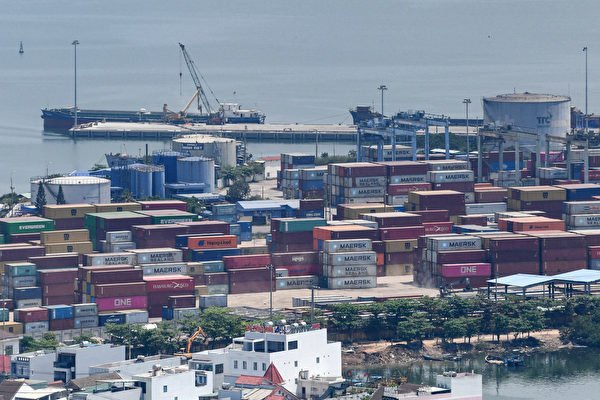In the second quarter of this year, just like in the first quarter, the Association of Southeast Asian Nations (ASEAN) once again exceeded its exports to the United States compared to China. This indicates that the escalation of the US-China trade war, geopolitical conflicts, and the slowdown of the Chinese economy have led to a transformation in the global supply chain, with the importance of the United States to the region growing day by day.
According to trade data compiled by Nikkei Asia, ASEAN’s exports to the United States reached $74 billion in the second quarter of this year, showing an 11% increase from the same period last year and surpassing the $71 billion exports to China.
These trade data are mainly based on statistics from the ASEAN Secretariat, supplemented by data from various national statistical agencies. In addition, Nikkei Asia also referenced reports from local media to verify the data and provide more background information.
Among the major ASEAN economies, the Philippines saw the highest year-on-year increase in exports to the United States at 35%, followed by Vietnam (24%) and Malaysia (11%).
Jun Neri, Chief Economist at the Bank of the Philippine Islands, mentioned in a report by Nikkei Asia that besides the resilience of the US economy, the increase in Philippine exports to the US could be a result of the global supply chain shifting away from China since the onset of the COVID-19 pandemic.
Neri also pointed out that China’s long-term lockdown during the COVID-19 pandemic led many countries to reshore production back to their own countries or shift it to other nearby countries.
According to the World Customs Organization classification, for semiconductor and machinery products, Vietnam saw a 41% year-on-year increase in exports to the United States in the second quarter, followed by the Philippines with a 36% increase, Thailand with a 16% increase, and Malaysia with a 9% increase.
This marks the second consecutive quarter this year that the United States has surpassed China as the largest export destination for ASEAN. During the first quarter from January to March, ASEAN’s exports to the US reached $67.2 billion, while exports to China were $57 billion. Experts believe this trend reflects the economic slowdown in China, with the US increasingly sourcing semiconductors and electrical components from ASEAN.
As the US-China trade war and geopolitical conflicts intensify, businesses in various countries are diversifying away from China to mitigate risks and reduce dependence on the country. Vietnam has been one of the biggest beneficiaries in the shift of manufacturing from China.
From Apple to Intel and other US companies, many have expanded into Vietnam to diversify their supply chains. Moreover, since the start of the US-China trade war in 2018, companies of various sizes have begun moving manufacturing to emerging markets like Vietnam and India to avoid tariff issues.
Given its proximity to the Chinese border, many semiconductor manufacturers and tech companies have set up factories in northern Vietnam, taking advantage of China’s supply chain advantages and the convenient export conditions from the Lach Huyen International Port. Samsung Electronics has major factories in Bac Ninh and Thai Nguyen provinces in northern Vietnam.
Barry Weisblatt, Research Director at VNDIRECT Securities, noted that the growth in Vietnam’s exports to the US cannot be solely explained by the strong US economy. He highlighted that Vietnam’s share of total US imports is “clearly” increasing.
He added, “Vietnam’s improving diplomatic relations with the United States, along with its low-cost yet highly skilled workforce, contribute to the expansion of exports.”
“With the escalating US-China trade war, Vietnam’s manufacturing sector is becoming more competitive. We expect these trends to continue regardless of who wins the US presidential election,” he said.
Thailand, known as the “Detroit of Asia” since the 1960s due to its massive automotive industry, is also enhancing its semiconductor industry as the sector undergoes changes like the transition to electric vehicles.

